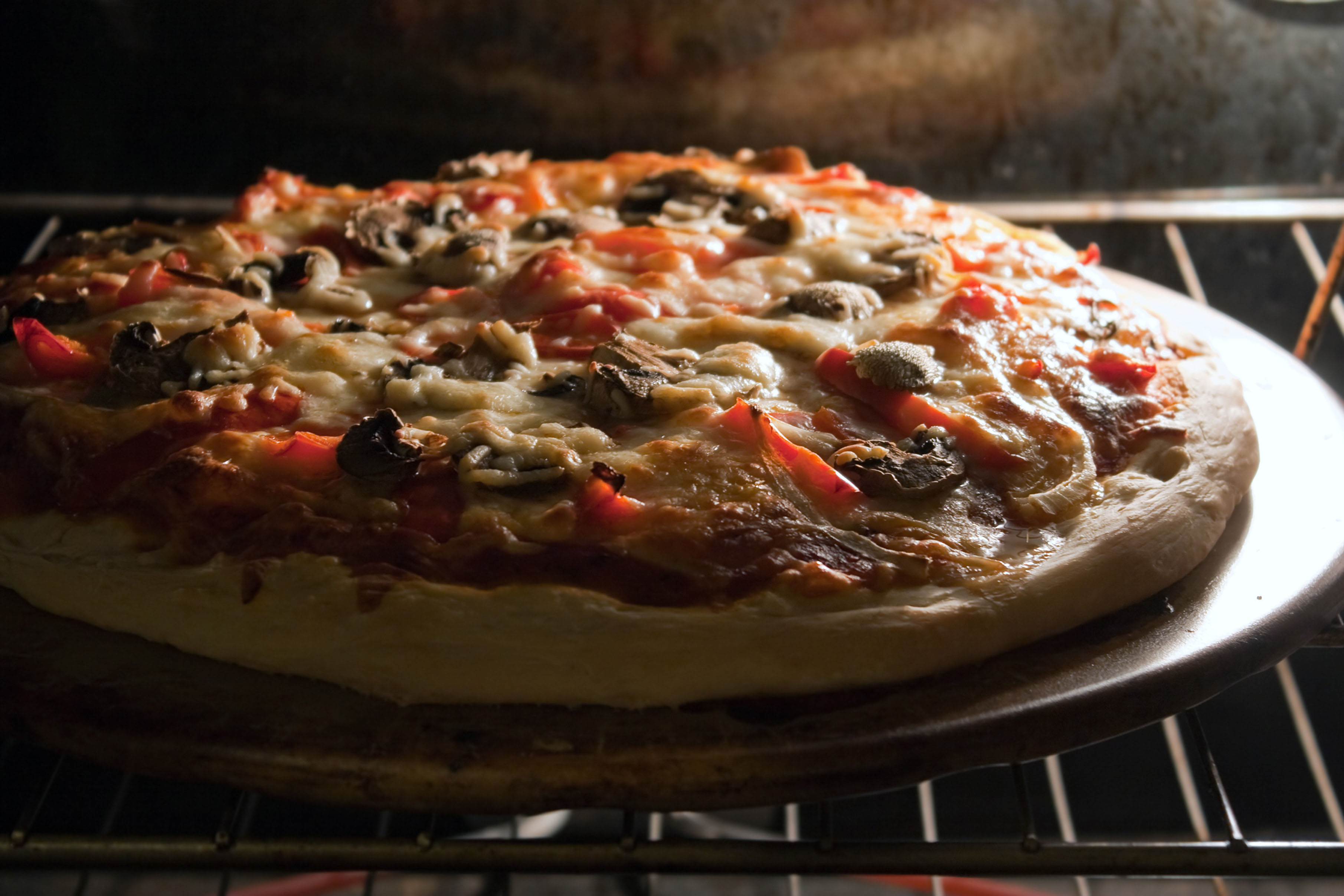How to clean a pizza stone – to keep it fresh for your next pie
Wondering how to clean a pizza stone? Use our expert guide to ensure it’s ready for use


The question of how to clean a pizza stone is likely to come up when you’ve added one of these to your kitchen kit.
A preheated pizza stone provides a hot surface on to which to set the pizza and helps ensure a puffed crust, even cooking and the essential crisp base to your pie, but you might well be lacking the cleaning tips necessary so it keeps on playing its part in delivering delicious slices.
Our guide has what you need to know to care for a pizza stone.
How to clean a pizza stone
A pizza stone allows you to mimic the results of your favorite takeout when you don’t have the benefit of a pizza oven to cook it in. As you use it over many occasions, a pizza stone will become darker and you may well see staining occur, too. Neither of these are a problem and they won’t affect the flavor. However, food debris will inevitably get stuck on to the stone, and this should be removed.
But as it’s made from ceramic, clay or cordierite, a pizza stone can’t be cleaned in the dishwasher, so the answer to the question of how to clean a pizza stone is one you need. Here’s the lowdown.
1. Allow the pizza stone to cool
Before cleaning a pizza stone, let it cool down completely. A pizza stone retains heat, so this will protect your hands and, as sudden changes in temperature could cause the stone to crack, letting it cool will prevent damage, too.
2. Clean the pizza stone with water
You can use water for cleaning a pizza stone, but there is a caveat. A pizza stone is porous so you should use as little water as possible as the stone needs to be thoroughly dry when you use it again.
Design expertise in your inbox – from inspiring decorating ideas and beautiful celebrity homes to practical gardening advice and shopping round-ups.
Use a minimal amount of hot water to wet the stone to begin the cleaning process.
3. Scrub the pizza stone
A special pizza stone brush is the best way to clean the stone – we like the Cuisinart Pizza Stone Cleaning Brush. Use the brush to scrub the surface of the stone clean.
‘If you don’t have a pizza stone brush, you can use a nylon brush,’ says Lucy Searle, global editor in chief, Homes & Gardens. ‘But set the brush aside for this task only as you don’t want to transfer any residue of dish soap to the stone.’
4. Remove any stuck-on food debris
The brush may remove all the debris from the pizza stone, but if there are any stubborn food particles on it, use a plastic scraper or spatula to tackle these. If you have a pizza brush this might include a scraper you can use.
5. Wipe down the stone and allow to dry
Once you’ve dislodged all the debris cooked on to the stone wipe it down with a damp cloth to remove it completely.
Use a dish towel to dry the stone or leave it to air dry.
What happens if you wash a pizza stone with soap?
If you wash a pizza stone with soap, the soap can be absorbed by the stone. Result? The flavor of your next pie might not be what it should be. Stick to using water alone to clean a pizza stone – and keep that to a minimum.
You might be worried about the potential for bacteria on the stone if you’re not using a cleaning product, but don’t be. ‘The temperature a pizza stone reaches means bacteria won’t survive,’ explains Lucy Searle, global editor in chief, Homes & Gardens.
How do you get the black off a pizza stone?
The black color of a pizza stone is part of the natural seasoning process, and a darkening of the stone over time is inevitable. ‘The color change won’t make the pizza stone a less effective aid to getting a great tasting pie, nor influence its flavor,’ says Lucy Searle, global editor in chief, Homes & Gardens.
You should clean the pizza stone after use, though. ‘To clean a pizza stone properly, allow it cool off in the oven until it’s room temperature, so that it doesn’t crack in cold air or water,’ says Louise Lee, category lead for kitchen, utility & cleaning, Robert Dyas. ‘Use a blunt tool to scrape off any excess food. Don't use soap – the stone is porous and the next time you cook with it your food might take on a soapy flavor. Finish by wiping the stone down with a wet cloth, ready for your next foray into Neapolitan cuisine.’

Sarah is a freelance journalist and editor. Previously executive editor of Ideal Home, she’s specialized in interiors, property and gardens for over 20 years, and covers interior design, house design, gardens, and cleaning and organizing a home for Homes & Gardens. She’s written for websites, including Houzz, Channel 4’s flagship website, 4Homes, and Future’s T3; national newspapers, including The Guardian; and magazines including Future’s Country Homes & Interiors, Homebuilding & Renovating, Period Living, and Style at Home, as well as House Beautiful, Good Homes, Grand Designs, Homes & Antiques, LandLove and The English Home among others. It’s no big surprise that she likes to put what she writes about into practice, and is a serial house renovator.